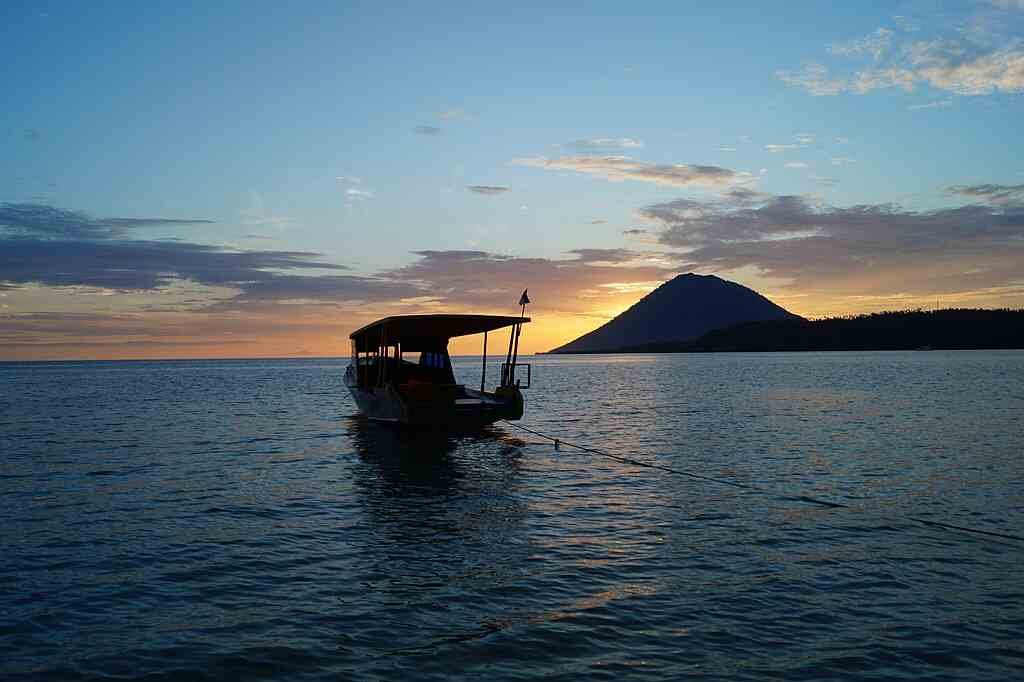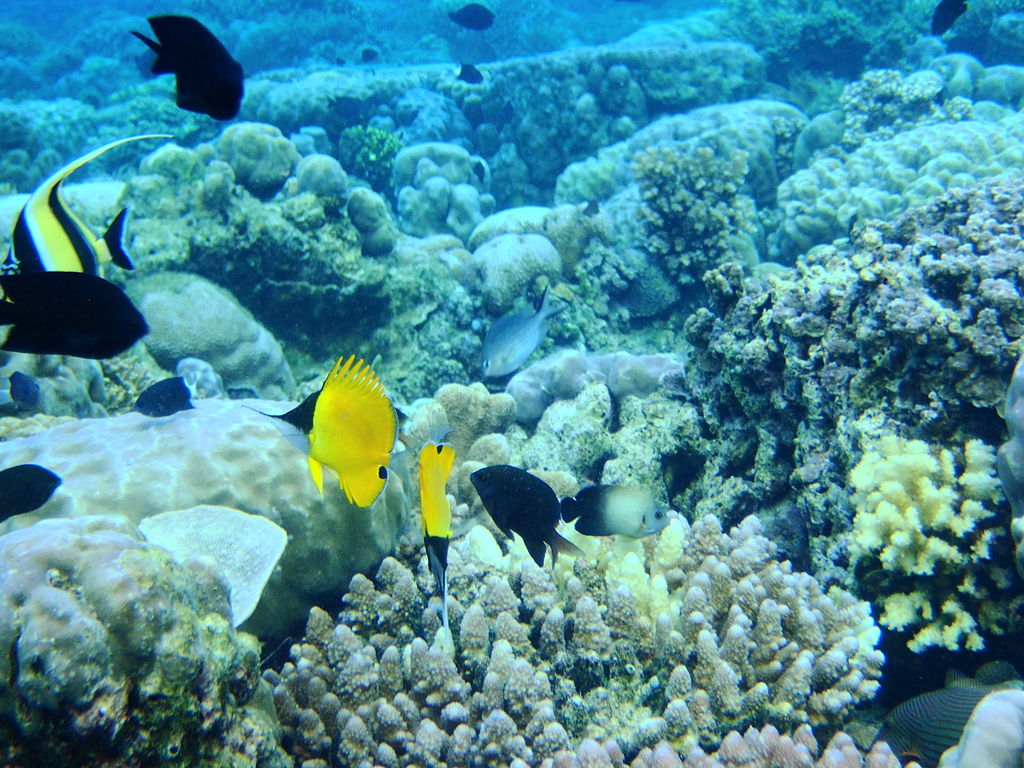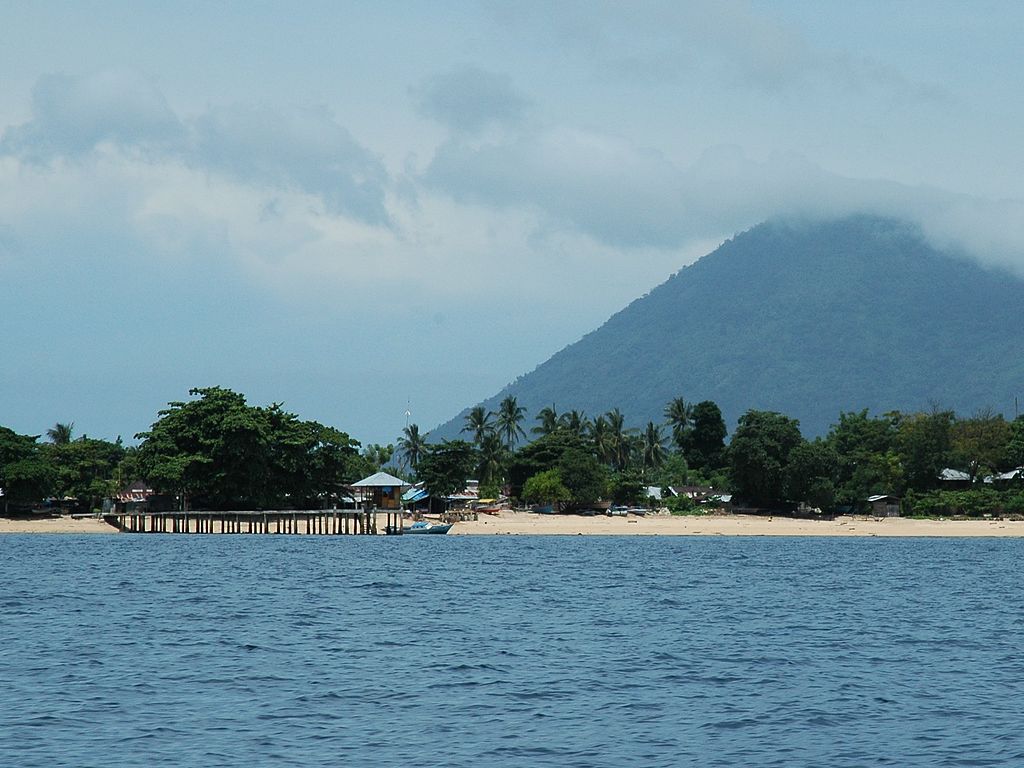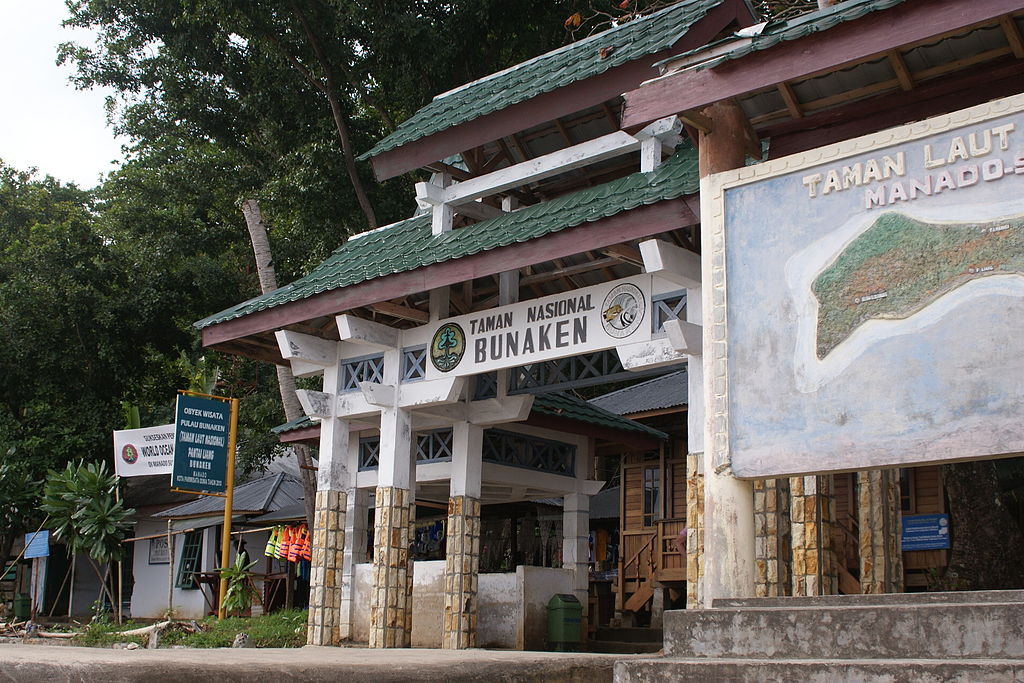From Bali to Manado | Complete Guide to Visit Bunaken, North Sulawesi
Manado is the ideal starting point to discover North Sulawesi. In addition to diving or snorkeling in Bunaken National Park, Manado offers beautiful excursions around the Minahasa culture: Ascent of the Mahawu volcano and its acid lake, discovery of the Tandano caldera lake, visit of a fish farm and visit of the Waruga animist tombs. From Manado, a day of hiking can be organized in Tangkoko Park, to meet endemic species such as couscous or tarsier, the smallest monkey in the world.
There is a direct flight from Bali to Manado Sam Ratulangi International Airport (MDC) that takes approximately 2 hours and 30 minutes. You can also fly directly from Singapore to Manado! Typically, the flight from Singapore to Manado takes about 3 hours, although the exact time may vary depending on the airline and weather conditions.
Manado is the main city in North Sulawesi, and most people here follow the Protestant faith. One of the coolest things about Manado is the Bunaken National Marine Park. It’s like an underwater wonderland with colorful coral reefs and all sorts of amazing sea creatures. It’s a must-see if you’re into underwater adventures!
In 1658, the Dutch East India Company built the Fort Amsterdam fortress in Manado.
Members of a religious mission in the Netherlands build the first Christian church which they call Oude Kerk (“Old Church”).
In 1859, the English biologist Alfred Wallace arrived in Manado.
During World War II, from 1939 to 1945, the city suffered severe bomb attacks.

Bunaken and Manado Tua islands. Pontohyesi, CC BY-SA 4.0, via Wikimedia Commons
From Bali to Manado by airplane
- Bali to Manado via Ujung Pandang (UPG Makassar)
- Bali to Manado via Jakarta (CGK)
Airlines from Bali to Manado
- Lion Air
- Batik Air
- Citilink
- Garuda
How to go to Bunaken from Manado?
To reach Bunaken Island, it’s very simple. Just take a boat from the port of Manado. The port is located just behind the Manado market. The most complicated thing is knowing which boat to take. In fact, there are two types of boat:
- Tourist boat / speed boat: price of the boat (1,000,000IDR) to be divided by the number of people.
- Local boat: crossing costs IDR 50,000 per person and takes 45 minutes.
The local boat to joined Bunaken from Manado, called the Bahtera boat; departs daily at 2 p.m.
Finally, for the return to Manado, the public boat leaves from Bunaken every day EXCEPT Sunday at 9 am.
Most hotels in Bunaken pick you up for free when you arrive in Bunaken (if you let them know beforehand). The resorts are not located right next to the port, otherwise you will have to go there on foot (at least 15 minutes walk) or by motorbike taxi (IDR 15 000 per person).
Read also: From Bali To Raja Ampat (4 Kings) | Complete Guide to Visit West Papua
1. Visit the city of Manado, capital of the North (point of arrival)
Manado is the capital of North Sulawesi, it will be especially your point of arrival before discovering the surroundings.
Manado is very well connected to major cities in Indonesia and even in Asia.
But from Europe, the most logical thing is to land in Jakarta, capital of Indonesia. Why?
- Jakarta will be your gateway to Indonesia and you are sure to be visa-free when arriving there.
- The Jakarta-Manado flight is direct – about 3 hours.

View of Manado’s waterfront facing south-southwest. Juxlos, CC BY-SA 4.0, via Wikimedia Commons
The city’s temples are superb
The Ban Hian Kong is a small 19th century Buddhist temple, the oldest in the region, the Kuan Yin temple, the great mosque and the many churches are also worth visiting.
Ban Hin Kiong Temple, Manado, North Sulawesi, Indonesia. Sakurai Midori, CC BY-SA 3.0, via Wikimedia Commons
Escape to Lembeh Island
In less than an hour by boat from the coast, the island of Lembeh will be a total change of scenery!
The island is separated from Celebes by the Lembeh Strait and is a popular scuba diving site due to its high biodiversity.
Lembeh Island view from Port of Bitung. Sakurai Midori, CC BY-SA 3.0, via Wikimedia Commons
Stroll through the atypical local market of Tomohon
The Tomohon market is truly an experience to do when visiting Sulawesi. Fruit, vegetables, exotic flowers but also grilled animals of all kinds!
The markets of the city will allow you to discover a little more the life of the inhabitants. Discover the seaside fish market “Pasar 45” and the citrus market.
The city of Manado offers the Bemo as a mode of transport
The Bemo: it’s a van with 2 benches, a sort of hybrid between a taxi and a bus. It is a means of transport that is both practical and economical. Normally with 10 seats, it can accommodate 16 people with their luggage.
2. Bunaken
This small, car-free island, surrounded by incredible marine life, is breathtaking! Renowned worldwide for its seabed, Bunaken is one of the best spots in Indonesia but also in the world for scuba diving. Bunaken has one of the most important marine biodiversity. Located 18 km (11 miles) from the coast of Manado, Bunaken Island is a little gem with only 3000 inhabitants.
Located off the coast of North Sulawesi, this marine park is a haven for divers and snorkelers. It boasts some of the world’s most biodiverse coral reefs and marine life.
Bunaken National Marine Park, Manado, Indonesia. Sakurai Midori, CC BY-SA 3.0, via Wikimedia Commons
Bunaken is considered one of the best scuba diving destinations in amazing Indonesia. People from all over the world come here just to dive. Divers will be delighted by the huge drop-offs covered with magnificent corals and by the crystal clear waters! The seabed around Bunaken Island is also incredibly deep, down to 1600m or 5249ft. This destination really has something special!
Here you can find large pelagic fish as well as small creatures that make this dive destination great for underwater photography.
Bunaken Island belongs to the Bunaken Marine National Park established in 1991. It encompasses several other islands like Manado, Tua, Siladen, Montehagen, Nain and Nain Kecil. Due to the creation of the marine reserve, the waters around Bunaken are healthy and offer fantastic biodiversity and some of the most beautiful corals in the world.

This destination also offers great snorkeling options for non-divers.
Activities to do and excursions in Bunaken, Manado
Bunaken Marine National Park is primarily a diving destination. However, there is the possibility of doing lots of other things during your stay or if you are not diving:
- Snorkeling above the coral gardens, which are fantastic right in front of most hotels.
- Hike the trails around the island or climb the volcano of Manado Tua.
- Fish with local fishermen, but outside the marine reserve 😉
- Go on a whale or dolphin watching excursion
- All these excursions can easily be organized for you by your diving club.
Manado Tua is a volcanic island in the Celebes Sea off the northeast coast of Sulawesi. The island is located on Bunaken National Park. User: (WT-shared) Jpatokal at wts wikivoyage, CC BY-SA 3.0, via Wikimedia Commons
Best time to visit Bunaken, Manado
During the peak of the tourist season which takes place in July and August, the dive centers can be full and it is recommended to book well in advance! Otherwise, the rest of the year is ok. See our diving page for more information.
Direct flights from Bali to Bunaken
There are 2 flights daily from Bali to Bunaken (Manado, Sam Ratulangi International Airport) and it takes 3 hours 50 minutes with Lion Air.
And from Bunaken to Bali, there are 2 direct flights.
Health and security
If you plan to go on a trip to Bunaken, Manado, we advise you to invest in a good travel insurance which also covers scuba diving. You never know what can happen and good insurance can get you out of tough situations. I recommend this travel insurance because they offer worldwide coverage and cover many risky sports like scuba diving.
Where is Bunaken, Manado located in the world?
Bunaken is a very small island (8 km²) located at the northern tip of the island of Sulawesi, in northern Indonesia. It is part of the immense Bunaken Marine National Park, which covers an area of 890.65 km² of which only 3% is terrestrial.
Manado Tua
Manado Tua is a volcanic island in the Celebes Sea, just off the northeastern coast of Sulawesi. It’s part of the Bunaken National Park. The name Manado comes from an old word, “manadou” or “wanazou,” which basically means “on the far coast” or “in the distance.”
This word has its roots in the local Minahasan languages. When the people moved their settlement from the island to Sulawesi, they brought the name Manado with them. So, the island came to be known as “Old Manado” or Manado Tua.

Pulau Manado Tua, North Sulawesi, Indonesia. Marwan Mohamad, CC BY-SA 4.0, via Wikimedia Commons
Marine National Park Conservation Fee
There is an entrance fee for Bunaken Marine Park. It costs IDR 150 000 per person (about CHF 10 or EUR 9.50 or USD 10.10) and generally it is the resort that obtains it and gives you your badge.
There is no tax for the Lembeh Strait.
If you have any other questions or comments, please let us know in the comments or by contacting us directly.
Gate to Bunaken Island, Manado, North Sulawesi, Indonesia. Sakurai Midori, CC BY-SA 3.0, via Wikimedia Commons
BUNAKEN NATIONAL PARK DIVE SITES
North Sulawesi consists of three main diving areas: Bunaken National Marine Park on the west coast, the Bangka Archipelago in the north and the Lembeh Strait on the east coast.
From Manado airport to Bunaken National Park takes around 40 minutes by car.
Although covering an area that is not very large, each of these areas offers very unique diving experiences. With access to over 150 dive sites, North Sulawesi is a fantastic place to spend your diving vacation!
Water temperature: between 26℃ or 78.8°F (Lembeh) and up to 30℃ or 86°F (Bunaken).
Topography: reef flats, coral walls, sandbanks, pinnacles, slopes.
Currents: Generally light, suitable for all skill levels.
Lekuan 1, 2 and 3
This large diving area can be visited in 3 times because there are so many things to see. It is a huge drop-off covered with giant sponges, black corals and gorgonians. It is undoubtedly one of the favorite sites for divers. The crevices are home to multiple species, butterflyfish, fusiliers, sea snakes, parrotfish, boxfish but also many turtles, eagle rays and napoleons, which roam around.
Lekuan 1. The first dive on Lekuan gives you the tone, indeed the wall is so big that you won’t be able to see everything. The water is crystal clear, you will come across sharks, turtles, trevallies, good-sized napoleons, and large schools of angelfish.
Lekuan 2. Second dive to continue exploring the reef. Here it is a beautiful collection of soft corals, there are hard corals, or even small caves and crevices. This beautiful setting is home to a dense fauna of tropical fish and turtles.

Nembrotha cristata, a species of colorful sea slug, pictured at Lekuan II dive site, Bunaken Marine National Park, North Sulawesi, Indonesia. Nembrotha cristata is a type of colorful sea slug that lives underwater. It’s also known as a nudibranch. These creatures are small, usually less than 10 centimeters (3.9 inches) long, and they come in bright and beautiful colors like orange, green, and blue. They have little frilly parts on their backs that help them breathe. Nembrotha cristata is often found in coral reefs, where it eats things like sponges. They’re really interesting to look at if you like marine life! Mindmaker at English Wikipedia, CC BY-SA 3.0, via Wikimedia Commons
Lekuan 3. Here you will dive down a small sandy slope to reach the drop off again. Barracuda shoals are common, but there are also macrofauna, such as cleaner shrimp. The sea fans and sponges are superb.
Fukui Dot
This site is in the southeastern part of Bunaken Park. It is a slope where multitudes of corals of all kinds, sponges and giant molluscs have landed. You will encounter schools of various fish, barracudas, eels, red mullets, eagle rays, parrotfish, etc.
Barracuda dot
It is a large drop off with several stages covered in sand. The clarity of the water makes the visibility excellent, you can see up to 30 meters. Barracuda and parrotfish abound at this dive site, which is reserved for experienced divers, due to the strong currents.
Panggulingan
You will start the dive on a gentle slope to reach a beautiful drop-off. The fauna is very dense on this site with large napoleons, butterflyfish, eagle rays, and sometimes small sharks.
The Molas Shipwreck site
This site has a very varied underwater life. The wreck of an old warship lies between 10 and 42 meters deep. Black, hard and soft corals, but also sponges, blue ribbon moray eels, frogfish, nudibranchs and lionfish are just waiting to be unearthed. It is not possible to enter the wreckage.
Batu Hitam (black rock)
Located near the Molas wreck, it is a beautiful reef with coral tables. This beautiful macro dive is ideal for photographers, as there is no current. There are ribbon moray eels, a fine collection of nudibranchs, leaffish, frogfish and crocodilefish.
Siladen Island offers two dive sites
On Siladen 1, you will dive over a vertiginous wall. The fixed fauna is remarkable. This site is very popular for snorkeling. Macrofauna is everywhere, you will see a lot of pygmy seahorses, and crabs. Sometimes in the blue, we observe white tip sharks.
Siladen 2 is on the northeast coast of the island. It is a gentle slope with large rocks and a multitude of corals. The current is stronger, it attracts pelagics. We observe sharks, napoleons and parrots.
Bunaken Timur 1 & 2
It is a huge reef located east of Bunaken Island. We can say that the area is home to all the fauna of the region and superb corals, of all sizes and colors. There is a nice variety of reef fish, but also pelagic and macrofauna. When there is no power, it is a dream location for photographers.
Mandolin Dot
Here a lot of sea fans and many small caves, habitats of a beautiful fauna. This site is accessible from the shore. If you do not want to explore the caves, you can admire the top of the reef, the fauna is very dense: surgeons, groupers, napoleons, rays or turtles.
Manado Tua
Around this small volcanic island, you will observe dizzying drop-offs, cracked by crevasses, where huge turtles hide. The decor is set: here we observe elephant ear corals, magnificent gorgonians, and all around are whitetip sharks and blacktip sharks, emperor fish, batfish and fusiliers swirling around.
3. Bogani Nani Wartabone National Park on the way to Gorontalo
Bogani national park formerly known as Dumoga Bone National Park, it was established in 1991 and was renamed in honour of Nani Wartabone, a local resistance fighter who drove the Japanese from Gorontalo during the World War II.
The park is considered by the Wildlife Conservation Society as the most important site for nature conservation in Sulawesi. It is home to many endemic species of the island, among which the threatened anoa.
Also found in the reserve are hammerhead chicken, babirusa (deer boar), the Sulawesi warty pig and the Gorontalo macaque.
The park contains endangered species of plants and trees such as the palm Pholidocarpus ihur and other special wood species and plants from the genus Amorphophallus . In the park are observed: 24 species of mammals, 125 species of birds, 11 species of reptiles, 2 species of amphibians, 38 species of butterflies and 200 species of beetles. The mammalian species such as the crested macaque (Macaca nigra), Temminck’s macaque (Macaca nigrescens), celebes tarsier (Tarsius tarsier), celebe palm roller (Macrogalidia musschenbroekii), anoa (Bubalus depressicornis also called gems buffalo), berganoa ( B. quarlesi), golden babiroessa (Babyrousa babyrussa also called deer boar), and the flying fox Rousettus bidens (often referred to as Bonea bidens or Bone bat ) are all endemic mammals that only occur on Celebes.
The park is also home to numerous endemic bird species such as the rusty-brown pitfall ( Ninox ios ) and the iconic hammerfowl (Macrocephalon maleo). A kind of grouse that lays the eggs in places with geothermal heat.
Maleo bird
The maleo is endemic to the island and is the park’s mascot. 2 This bird has successfully bred in the park, and as of February 2012, around 3,300 birds have been released into the wild.
Maleo (Macrocephalon maleo) at Muara Pusian, North Sulawesi. Ariefrahman, CC BY-SA 4.0, via Wikimedia Commons
The Hungoyono camp on Bone Bolango is the largest habitat for these Maleo with four breeding sites. Birds usually need hot geothermal sand to breed, like in the Hungoyono camp.
Spectral tarsier / ghost tarsier
The ghost tarsier is one of the endangered species that inhabits the park.
Tarsiers are nocturnal creatures that do activities at night and sleep during the day. Therefore Tarsiers hunt at night. Their main prey is insects such as cockroaches, crickets, and occasionally small reptiles, birds and bats. Its habitat is in the forests of North Sulawesi to South Sulawesi, as well as on islands around Sulawesi such as Suwu, Selayar and Peleng.
Tarsier Tarsius sp., Grand Naemundung Mini Zoo, Tandurusa, Bitung, North Sulawesi. Sakurai Midori, CC BY-SA 3.0, via Wikimedia Commons
Tarsiers can also be found in the Philippines. In Bantimurung Bulusaraung National Park, South Sulawesi, Tarsier is better known by the local community as “balao cengke” or “squat mouse” if translated into Indonesian.
4. Discover the main volcanoes Mahawu and Lokon
Ideal for hiking and for a change from the city or the sea, discover the two volcanoes Mahawu and Lokon.
Mahawu
Mount Mahawu is a stratovolcano located immediately east from Lokon-Empung volcano in North Sulawesi, Indonesia.
Set off on this 12.9 km (8 miles) round-trip route near Tomohon, North Sulawesi. Generally considered a moderate course, it takes an average of 4h 23min to complete. It is a popular route for roaming, hiking and mountain biking, but you can still enjoy some quiet moments.
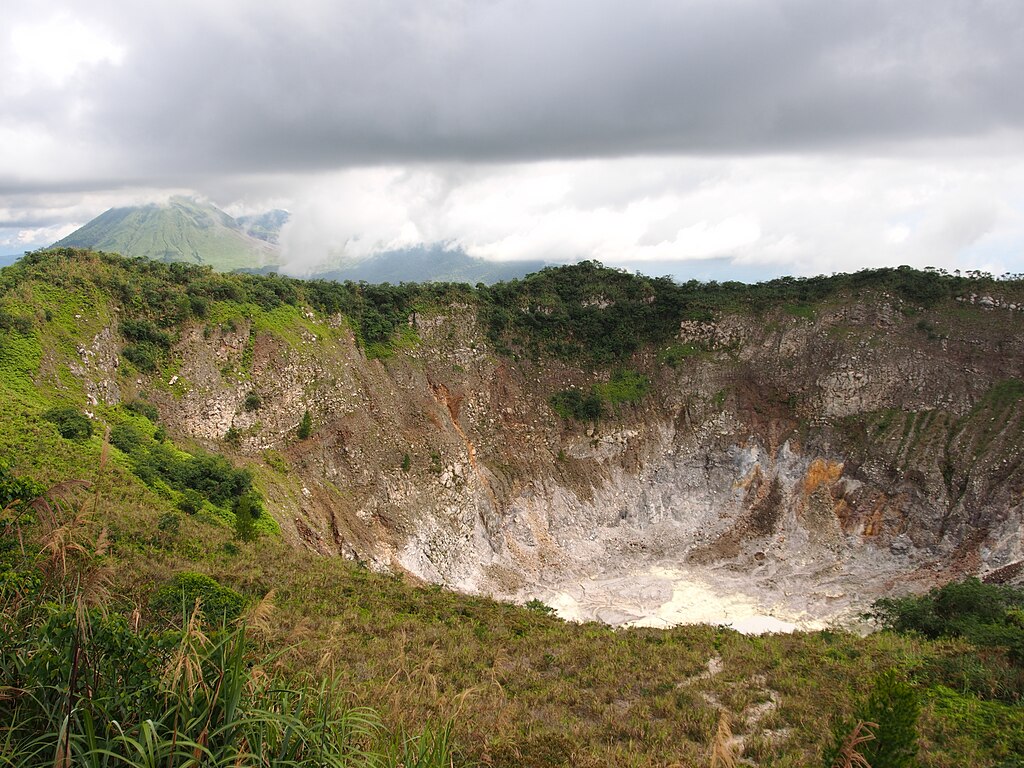
Crater of Mahawu in North Sulawesi, Indonesia. Jacob Mojiwat, source: https://www.flickr.com/photos/jmojiwat/34799015484/ (CC BY 2.0), via Wikimedia Commons
The hiking trail here is no less beautiful than the crater, by the way, as this hiking trail has the charm of a soothing grove.
Sunlight streaming through the tree branches also accompanies tourists on the hiking trail in mount Mahawu.
Another attraction of Mount Mahawu is that it has rare plant species. The rare plants that thrive here are rare plants typical of North Sulawesi.
Lokon
Mount Lokon is beautiful too,also known as Gunung Lokon (in Indonesian language), together with Mount Empung, is a twin volcano in the Tomohon, Minahasa Regency, North Sulawesi, Indonesia, roughly 10 km (6.2 miles) south of Manado.
Check out this 6.6 km (4.1 miles) round trip route near Tomohon, North Sulawesi. Generally considered a moderate course, it takes an average of 2h 54min to cover it. It is a popular route for roaming and hiking, but you can still enjoy some quiet time.
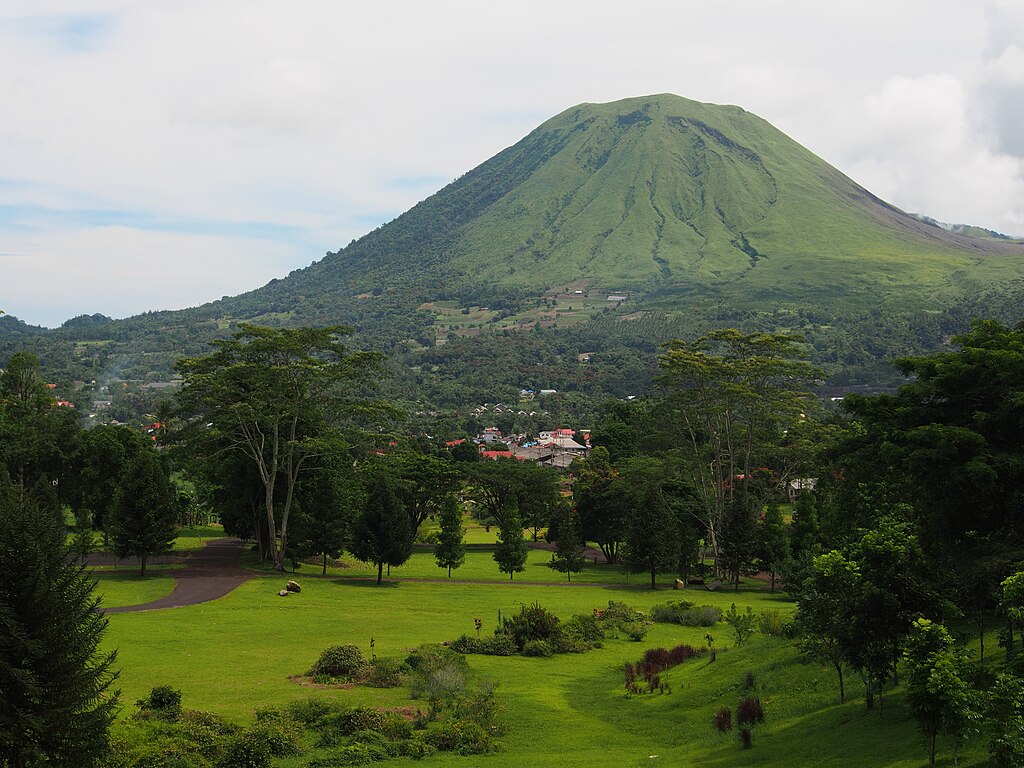
Mount Lokon seen from East in North Sulawesi, Indonesia. Jacob Mojiwat, source: https://www.flickr.com/photos/jmojiwat/35471444692/ (CC BY 2.0), via Wikimedia Commons
Mount Lokon climbing route is quite difficult as there are a lot of big rocks to climb and the rocks are a bit slippery due to the moss growing around the rock.
You will cross a dry river which is an old lava flow and small sandy rocks, be careful as on your side is a steep ravine.
You also have to be careful near the crater, sometimes the smell of crater gas will be carried away by the wind, and this gas is poisonous, do not inhale the smell of this crater gas.
Photo credit (main photo): Niek van Son (CC BY 2.0) Source: https://www.flickr.com/photos/niek_van_son/29789916401/ via Wikimedia Commons
From Bali to Tana Toraja | Complete Guide to Visit South Sulawesi
Have you booked your villa in Seminyak center?
Located in Seminyak Center – Bali, Villa Carissa offers a private swimming pool and enclosed garden to guarantee your privacy. You can book your private pool villa here with us.
Whether you’re traveling with family, friends, or on a romantic getaway, villa Carissa in Seminyak center offers the perfect base for exploring Bali’s many attractions and enjoying a relaxing vacation.

